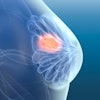With little need for human intervention or training, a commercially available software application can reliably import images from CDs into a PACS network, according to researchers from Penn State Milton S. Hershey Medical Center.
Over a 22-month period, the institution has imported more than 90,000 images with an error rate of less than 1%, and those errors were primarily attributed to issues with the CDs.
"Our outside image CD solution has grown over a short period of time and allowed an easy means of health information exchange," said Timothy Yanchuck, an IT manager at the hospital. He presented the team's results during a scientific session at RSNA 2012.
Repeat imaging and overutilization
Diagnostic imaging has experienced increased utilization over the past decade, with Medicare spending on imaging growing from $6.9 billion to $14 billion between 2000 and 2006. As noted by the American Board of Radiology, part of that growth is tied to the overutilization of repeat imaging, Yanchuck said.
A University of California, San Francisco study presented at the RSNA 2011 meeting showed patient repeat imaging rates of 72% when outside images were not available. That rate dropped dramatically, to 11%, if images were available and uploaded to the local PACS network.
In addition to reducing radiation exposure to patients, as well as costs, incorporating outside images into PACS offers benefits such as easier comparison of exams on a patient's timeline, secure and more permanent storage of images, and a more complete electronic medical record, Yanchuck said.
While cloud-based image management offers promise, in some cases this option isn't available to everyone.
"The cloud is coming but, unfortunately, the cloud is not there yet," he said. "So we needed to come up with a solution to address the infamous CDs and DVDs. They are still coming in."
The problem with CDs
CDs remain the primary method used today for transferring important outside imaging studies. However, CDs can be scratched or easily damaged, and they may contain images that are not in standard DICOM format.
"[The images] may not load on a particular device," he said. "The user may not have the appropriate administrative relation to the device, or the images choke another application that's running and the whole system may crash."
CDs and DVDs can also be lost or need to be returned to the patient, he said.
Even if a CD exam is placed in a PACS, some institutions in the literature have performed this task via a radiology film library, Yanchuck said. This requires a radiology library to be open 24 hours a day, seven days a week, as the CDs must be brought to the library for uploading.
Prior studies that have integrated outside CDs into the PACS have also not accounted for the creation of unique accession numbers for tracking within RIS and PACS, he said.
"We wanted to prove that this could be done with little to no effort from the IT team and somewhat limited training of nonmedical personnel," he said.
CD import system
As a result, the Penn State team sought to deploy and assess an automated approach for integrating outside CDs with data in the RIS/PACS, and marrying the images in the patient's PACS timeline. They hoped to achieve a low error rate with a system that could be simple enough to be used by nonmedical personnel and would be available on enterprise-wide workstations.
They implemented the LiteBox (ETIAM) application as an enterprise-wide CD image exchange system and tracked utilization over a 22-month period. The application scans the DICOM data on the CD and presents the user with the patient's name, date of birth, the patient's ID, study date(s), and study descriptions, he said.
The end user -- either the medical office assistant or other trained medical staff -- verifies the patient demographics. He or she is then prompted with a screen that requires replacement of the foreign patient ID with a local medical record number (MRN) from the recipient institution.
"With a click of a button, those images are sent to our PACS," he said.
Once patient demographics are verified, the DICOM image tags are also automatically updated, and the software deletes the previous accession number field. Using an interface engine, a message is sent from their institution's PACS to the RIS to automatically create a generic outside CD exam based on the DICOM modality tags.
"The deletion of the accession number and recreation of a new one has really helped us to tie our PACS and RIS together in real-time," he said.
If the local medical record number supplied by the end user matches the medical record number and date of birth with an existing patient in the RIS, the images are automatically married to the RIS record, and validation is complete. Mismatched exams are not created in the RIS, and images land in an exception queue that can be examined by hospital personnel.
Hershey Medical Center implemented the system at main patient points of registration, including the emergency room clinics and inpatient floors. The researchers recorded the number of views and location sites over the study period. They also recorded the total number of exams imported per week, and error information.
Over the 22-month period, 90,079 outside exams were imported. There was an increase from 1,700 exams imported in the first six months to a mean of 5,234 exams in the last six months of the study.
The system was loaded on 352 devices at 61 patient-care sites. Some of these were satellite outpatient facilities more than 30 miles from the main hospital.
Few errors
An error rate of less than 1% was found, and these errors were mainly due to incorrect patient names, more than one patient being listed on a CD, or an incompatible file format.
"The other main issue that we had was 'fat fingering' by the medical office assistant if they transposed a medical record number digit for digit," he said.
Early on, the institution struggled a little in dealing with CDs that weren't DICOM-compliant, produced from legacy Amicas and iSite PACS, but staff members worked with their vendor to resolve that issue.
"Mostly people are providing DICOM-standard [CDs] now," he said. "But you still get a CD once in a while that does not meet that format."
With the low error rate, this is an application that can continue to grow without a lot of human intervention, he said. One-time training of medical office assistants or other end users is required, however.
Studies are stored locally on enterprise servers and have reached 1.2 TB worth of storage, Yanchuck said. Redundant copies are unnecessary, as that would have incurred additional costs from their PACS vendor.
"We found that [the electronic image exchange application] was successful, and we look forward to growth across our enterprise," he said.




















